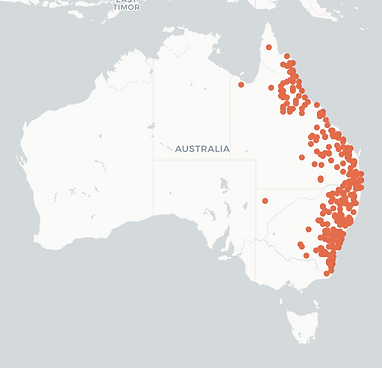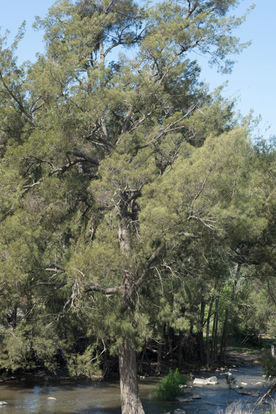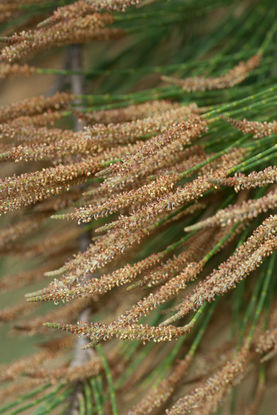
Strategic tree and forest establishment and regeneration on the Southern Tablelands
Casuarina cunninghamiana
River Sheoak
CASUARINACEAE

Native range: NSW, ACT, Qld Height: 15-33 m Width: 5-10 m Flowering: Late summer-autumn Fruiting: Autumn Light: Full sun Growth rate: Fast Soils: Free-draining loam, clay loams, alluvial soils, sandy gravels Drought tolerance: Moderate Landscape position: River margins, river islands Rainfall range: 650 – 1250 mm Benefits: River Sheoak (Casuarina cunninghamiana) is a long-lived, native evergreen tree found along river corridors. It is a large, fast-growing species with pendulous green stems that act as leaves. The true leaves are reduced to small tooth-like projections along the stems. River She Oak are a dioecious species, with plants being either male or female, and producing either pollen or fruits. They are wind pollinated. Casuarina cunninghamiana has a dense root system that help stabilise riverbanks. It fixes nitrogen using a root nodulation bacterium, Frankia spp., which increases growth rates, though plants can survive without it. It is hardy, drought and frost-tolerant species that will grow in a range of soil types, but it will not grow in wet, cold areas or frost hollows. It can tolerate mild salinity levels. Despite being a riparian species, River She Oak grows well in cultivation in sites that can be seasonally dry. It is a good mid- to -high level shelterbelt species, with foliage that slows windspeeds. Fallen foliage forms a weed-free mulch. Seedlings and young trees are browsed by stock, so trees need to be fenced off. The foliage can be used as emergency fodder. Trees can be used to stabilise erosion areas and riparian areas. Casuarina cunninghaminana provides useful habitat to native species, and the seeds are eaten by parrots and finches. The pollen is a valuable source of protein for bees. The timber has brown coloured sapwood and light sapwood with pinkish tones, and distinctive patterning caused by ray cells. It is strong but can be difficult to dry due to twisting and warping. Uses have included tool handles, barrel staves, shingles. It is a desirable species for wood turning and furniture manufacture. The timber burns well, producing hot coals. Drawbacks: Plants killed by hot fires. Roots can invade pipes. Too large for domestic gardens. Fallen needles can be problematic. Uses: Ornamental and landscaping use in parklands and gardens Shelterbelts Erosion control Soil stabilisation Agroforestry Habitat for native biodiversity Specialty timber used in cabinetry and fine craft items Timber for firewood Propagation: From seed. Harvest cones when dull grey-brown. Place in bag and leave in dry place to release seeds from cones. Weed risk: None in local area, but are environmental weeds in many other countries. Future climate risks: Increased fire intensity and frequency. Extreme and prolonged drought. References AVH (2022). The Australasian Virtual Herbarium, Council of Heads of Australasian Herbaria, https://avh.chah.org.au PlantNET (The NSW Plant Information Network System). Royal Botanic Gardens and Domain Trust, Sydney – https://plantnet.rbgsyd.nsw.gov.au/ Agroforestry in Australia – Casuarina cunninghamiana – https://shorturl.at/nvDZ4 Woolshed Thurgoona Landcare Group website – https://wtlandcare.org/
























